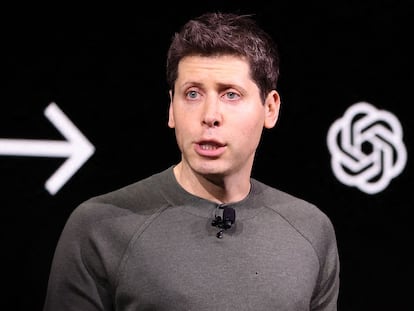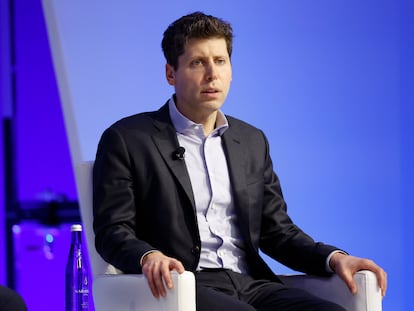OpenAI reinstates CEO Sam Altman to its board after an internal investigation
The actions are a way for the San Francisco-based artificial intelligence company to show investors and customers that it is trying to move past the internal conflicts that nearly destroyed it last year

OpenAI is reinstating CEO Sam Altman to its board of directors and said it has “full confidence” in his leadership after an outside investigation into the turmoil that led the company to abruptly fire and rehire him in November.
OpenAI said the investigation by the law firm WilmerHale concluded that Altman’s ouster was a “consequence of a breakdown in the relationship and loss of trust” between Altman and the prior board.
The ChatGPT maker also said it has added three women to its board of directors: Dr. Sue Desmond-Hellman, a former CEO of the Bill and Melinda Gates Foundation; Nicole Seligman, a former Sony general counsel; and Instacart CEO Fidji Simo.
The actions are a way for the San Francisco-based artificial intelligence company to show investors and customers that it is trying to move past the internal conflicts that nearly destroyed it last year and made global headlines.
For more than three months, OpenAI said little about what led its then-board of directors to fire Altman on Nov. 17. An announcement that day said Altman was “not consistently candid in his communications” in a way that hindered the board’s ability to exercise its responsibilities. He also was kicked off the board, along with its chairman, Greg Brockman, who responded by quitting his job as the company’s president.
Much of OpenAI’s conflicts are rooted in its unusual governance structure. Founded as a nonprofit with a mission to safely build futuristic AI that helps humanity, it is now a fast-growing big business still controlled by a nonprofit board bound to its original mission.
The investigation found the prior board acted within its discretion. But it also determined that Altman’s “conduct did not mandate removal,” OpenAI said.
Days after his surprise ouster, Altman and his supporters — with backing from most of OpenAI’s workforce and close business partner Microsoft — helped orchestrate a comeback that brought Altman and Brockman back to their executive roles and forced out board members Tasha McCauley, Helen Toner and Ilya Sutskever, though the latter kept his job as chief scientist.
Altman and Brockman did not regain their board seats at that time. But an “initial” new board of three men was formed, led by former Salesforce and Facebook executive Bret Taylor, who also chaired Twitter’s board before Elon Musk took over the platform. The others were former U.S. Treasury Secretary Larry Summers and Quora CEO Adam D’Angelo, the only member of the previous board to stay on.
(Both Quora and Taylor’s new startup, Sierra, operate their own AI chatbots that rely in part on OpenAI technology.)
OpenAI had retained the law firm WilmerHale to investigate the events that led to Altman’s ouster. During the probe, OpenAI said WilmerHale conducted dozens of interviews with the company’s prior board, current executives, advisers and other witnesses. The company also said the law firm reviewed thousands of documents and other corporate actions.
The company still has other troubles to contend with, including a lawsuit filed by billionaire Elon Musk, who helped bankroll the early years of OpenAI and was a co-chair of its board after its 2015 founding. Musk alleges that the company is betraying its founding mission in pursuit of profits.
Legal experts have expressed doubt about whether Musk’s arguments, centered around an alleged breach of contract, will hold up in court.
But it has already forced open the company’s internal conflicts about its unusual governance structure, how “open” it should be about its research and how to pursue what’s known as artificial general intelligence, or AI systems that can perform just as well as — or even better than — humans in a wide variety of tasks.
Sign up for our weekly newsletter to get more English-language news coverage from EL PAÍS USA Edition
Tu suscripción se está usando en otro dispositivo
¿Quieres añadir otro usuario a tu suscripción?
Si continúas leyendo en este dispositivo, no se podrá leer en el otro.
FlechaTu suscripción se está usando en otro dispositivo y solo puedes acceder a EL PAÍS desde un dispositivo a la vez.
Si quieres compartir tu cuenta, cambia tu suscripción a la modalidad Premium, así podrás añadir otro usuario. Cada uno accederá con su propia cuenta de email, lo que os permitirá personalizar vuestra experiencia en EL PAÍS.
¿Tienes una suscripción de empresa? Accede aquí para contratar más cuentas.
En el caso de no saber quién está usando tu cuenta, te recomendamos cambiar tu contraseña aquí.
Si decides continuar compartiendo tu cuenta, este mensaje se mostrará en tu dispositivo y en el de la otra persona que está usando tu cuenta de forma indefinida, afectando a tu experiencia de lectura. Puedes consultar aquí los términos y condiciones de la suscripción digital.
More information
Archived In
Últimas noticias
NASA discovers Titan doesn’t have an ocean, but a ‘slushy ice layer’ that increases possibility of life
Innocence lost in the forest of the child soldiers: ‘Each leader of the armed group had his girls’
‘Fallout’ or how the world’s largest company turned an anti-capitalist apocalyptic Western into a phenomenon
From inflation to defending migrants: Eileen Higgins and Zohran Mamdani inaugurate the new Democratic resistance against Trump
Most viewed
- ‘El Limones’ and the growing union disguise of Mexican organized crime
- Christian Louboutin: ‘Young people don’t want to be like their parents. And if their parents wear sneakers, they’re going to look for something else’
- The low-cost creative revolution: How technology is making art accessible to everyone
- ‘We are dying’: Cuba sinks into a health crisis amid medicine shortages and misdiagnosis
- Liset Menéndez de la Prida, neuroscientist: ‘It’s not normal to constantly seek pleasure; it’s important to be bored, to be calm’










































